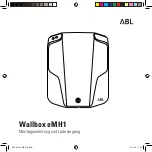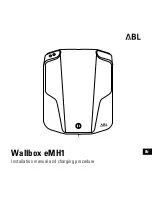
9 Check that the clutch action is smooth and
progressive, that the drive is taken up
smoothly, and that the pedal travel is not
excessive. Also listen for any noises when the
clutch pedal is depressed.
10 Check that all gears can be engaged
smoothly, without noise, and that the gear
lever action is not abnormally vague or
“notchy”.
11 Listen for a metallic clicking sound from
the front of the vehicle, as the vehicle is driven
slowly in a circle with the steering on full lock.
Carry out this check in both directions. If a
clicking noise is heard, this indicates wear in a
driveshaft joint, in which case, the complete
driveshaft must be renewed (see Chapter 8).
Check the operation and
performance of the braking
system
12 Make sure that the vehicle does not pull to
one side when braking, and that the wheels
do not lock prematurely when braking hard.
13 Check that there is no vibration through
the steering when braking.
14 Check that the handbrake operates
correctly, without excessive movement of the
lever, and that it holds the vehicle stationary
on a slope.
15 Test the operation of the brake servo unit
as follows. With the engine off, depress the
footbrake four or five times to exhaust the
vacuum. Start the engine, holding the brake
pedal depressed. As the engine starts, there
should be a noticeable “give” in the brake
pedal as vacuum builds up. Allow the engine
to run for at least two minutes, and then
switch it off. If the brake pedal is depressed
now, it should be possible to detect a hiss
from the servo as the pedal is depressed.
After about four or five applications, no further
hissing should be heard, and the pedal should
feel considerably firmer.
31 Timing belt renewal
3
Refer to Chapter 2B or 2C.
1•20
Every 24 000 miles or 2 years
Every 36 000 miles or 3 years
32 Fuel filter renewal - fuel
injection models
2
Warning: Before carrying out the
following operation, refer to the
precautions given in “Safety
first!” at the beginning of this
manual, and follow them implicitly. Petrol
is a highly-dangerous and volatile liquid,
and the precautions necessary when
handling it cannot be overstressed.
1 The fuel filter is situated on the engine
compartment bulkhead. Before disconnecting
any of the hoses from the filter it will be
necessary to depressurise the fuel system
(see Chapter 4B or 4C).
2 To renew the fuel filter first disconnect the
fuel hose, or unscrew the union bolt from the
top of the unit then place the bolt, union and
washers to one side and cover to prevent
ingress of dirt (see illustration). Unscrew the
clamp bolt, then lift the filter and unscrew the
bottom union. Dispose safely of the old filter;
it will be highly inflammable, and may explode
if thrown on a fire.
3 Fit the new filter using a reversal of the
removal procedure; making sure that dust and
dirt is prevented from entering the fuel lines.
Start the engine and check the filter hose
union connections for leaks.
33 Coolant renewal
2
Cooling system draining
Warning: Wait until the engine is
cold before starting this
procedure. Do not allow
antifreeze to come in contact
with your skin, or with the painted surfaces
of the vehicle. Rinse off spills immediately
with plenty of water. Never leave antifreeze
lying around in an open container, or in a
puddle in the driveway or on the garage
floor. Children and pets are attracted by its
sweet smell, but antifreeze can be fatal if
ingested.
1 With the engine completely cold, remove
the expansion tank filler cap. Turn the cap
anti-clockwise until it reaches the first stop.
Wait until any pressure remaining in the
system is released, then push the cap down,
turn it anti-clockwise to the second stop, and
lift it off.
2 Where fitted, unscrew the radiator filler cap
from the top left-hand side of the radiator.
3 Position a suitable container beneath the
coolant drain outlet at the lower left-hand side
of the radiator.
4 Unscrew the drain plug and allow the
coolant to drain into the container.
5 To assist draining, open the cooling system
bleed screws. These are located in the heater
matrix outlet hose union (to improve access, it
may be located in an extension hose) on the
engine compartment bulkhead, in the inlet
manifold coolant hose (XV, XW and XU series
engines) and on the top of the thermostat
housing (TU series engines) (see
illustrations).
6 When the flow of coolant stops, reposition
the container below the cylinder block drain
plug. On all engines except TU series, the
drain plug is located above the right-hand
driveshaft, or driveshaft intermediate bearing.
On TU series engines, the drain plug is
located at the front left-hand side of the
cylinder block.
Every 48 000 miles or 4 years
32.2 Fuel filter fuel hose and retaining
clamp locations
Every 2 years (regardless of mileage)
Summary of Contents for 205 Cabriolet
Page 108: ...4B 8 Notes ...
Page 114: ...4C 6 Notes ...
Page 132: ...5B 8 Notes ...
Page 148: ...9 16 Notes ...
Page 160: ...10 12 Notes ...
Page 174: ...11 14 Notes ...
Page 189: ...Wiring diagrams 12 15 12 Key to wiring diagrams ...
Page 190: ...12 16 Wiring diagrams Key to wiring diagrams continued ...
Page 230: ...REF 29 REF Notes ...
Page 231: ...Left blank for manual listing pages ...
















































